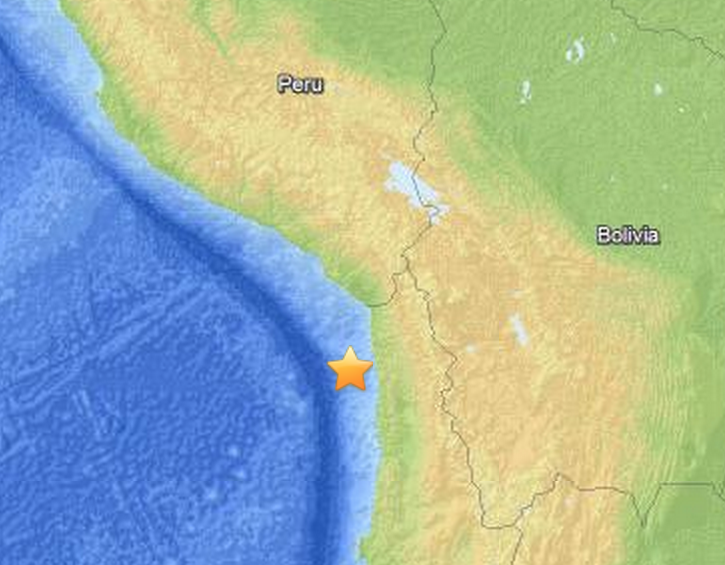Huge Earthquake Triggers Tsunami Warning in Chile

This story was updated at 9:30 a.m. ET to add information about damage and casualties.
A massive earthquake of magnitude 8.2 struck Tuesday (April 1) off the coast of northern Chile, triggering a tsunami, according to the U.S. Geological Survey (USGS).
The temblor's epicenter was 59 miles (95 kilometers) northwest of the Chilean port city of Iquique. It originated 12.5 miles (20.1 km) deep and struck at 6:46 p.m. Tuesday local time (23:46 UTC), the USGS reports.
At least five people were killed after being crushed to death or suffering heart attacks, the Associated Press reported. The quake prompted evacuations along Chile's Pacific coast, triggered landslides that blocked roads, caused power failures and set off a small tsunami.
"Sea level readings indicate a tsunami was generated," read a statement from the Pacific Tsunami Warning Center (PTWC). "It may have been destructive along coasts near the earthquake epicenter and could also be a threat to more distant coasts."
A tsunami warning was in effect for the coasts of Chile, Peru and Ecuador; waves nearly 7 feet (2.1 meters) high were reported in Iquique, according to the PTWC notice. A tsunami watch was issued for Colombia, Panama, Costa Rica, Nicaragua and El Salvador. There was also a tsunami advisory in place for Hawaii, where swimmers and boaters were warned that they could see bigger waves than usual.
The big tremor follows an uptick in seismic activity in Chile over the past few weeks. A magnitude-6.7 earthquake occurred on March 16, followed by more than 60 earthquakes over magnitude 4 and 26 earthquakes over magnitude 5, according to the USGS.
Get the world’s most fascinating discoveries delivered straight to your inbox.
Earthquakes of the size of the one that struck Tuesday are considered major and can cause significant damage, especially with poorly built structures. Even well designed buildings can be damaged or, in some cases, destroyed depending on the severity of the quake and a building’s proximity to the epicenter. Earthquakes of this size are sometimes followed by significant aftershocks.
But the damage caused by any single event depends on the quake's depth, proximity to populated areas, building standards in the region, as well as the type of earthquake. The USGS frequently updates the magnitude of an event after more data is analyzed.
An earthquake's magnitude is a measure of the energy released at the source. It is just one predictor of the shaking that may ensue, which is affected by local and regional geology. Scientists know in a general sense what causes Earthquakes but are unable to predict specific quakes.
This article will be updated if significant additional information becomes available. Find more earthquake news here.



